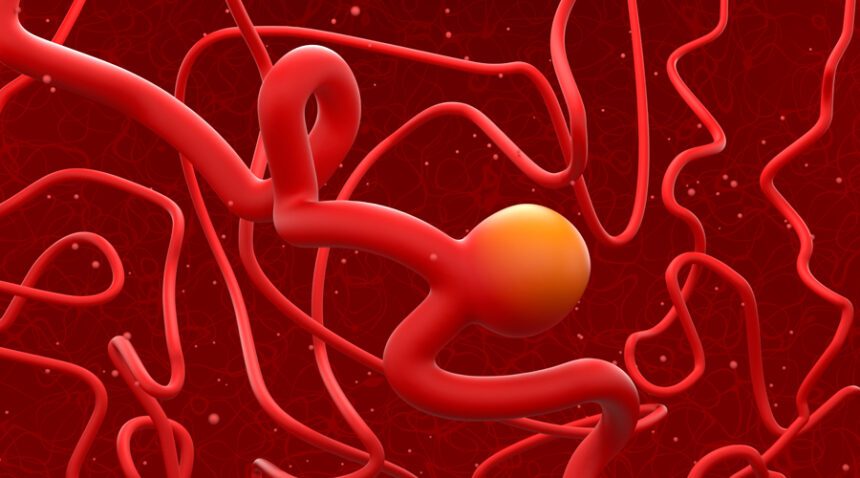If you are struck with the worst headache of your life, you should call 911 and go to the nearest emergency department. That kind of sudden, terrible headache is the primary symptom of a ruptured brain aneurysm, and it must be evaluated immediately.
Brain aneurysms form at a weak spot on a blood vessel, causing a small balloon to form. They appear similar to berries and are sometimes called berry aneurysms.
“About 3 to 5 percent of people have a brain aneurysm and don’t know it,” says UNC Health neurosurgeon Carlos David, MD. “In a small percentage, that aneurysm will burst and cause a brain hemorrhage.”
The media will often report on a rupture incorrectly, says UNC Health neurointerventionalist Tibor Becske, MD.
“You’ll read that someone suffered an aneurysm, but the aneurysm had probably been there for years,” he says. “That person suffered a rupture and a bleed.”
Dr. David and Dr. Becske explain what happens when an aneurysm is identified and when it ruptures.
Living with an Unruptured Brain Aneurysm
Anyone can develop brain aneurysms, but they are more common in women and older people. Some genetic conditions, including polycystic kidney disease and tissue disorders that weaken arteries, increase the risk of a brain aneurysm, as does a family history of brain aneurysms.
Most aneurysms cause no symptoms and usually are found by accident when the brain is scanned for other reasons.
“Occasionally, the aneurysm can push on nearby structures and cause headaches and pain behind the eye,” Dr. David says. “If the aneurysm hits a nerve, it could cause a droopy eyelid. If an aneurysm is large, it could cause tumor-like symptoms.”
When an aneurysm is identified, it doesn’t always warrant immediate treatment.
“If we find an aneurysm, we make a prediction about the risk of rupture by looking at the size of the aneurysm, where it’s located in the brain and the patient’s medical history,” Dr. Becske says. “We compare that to the risk of treatment.”
Aneurysms have a greater chance of rupturing the bigger they get, and a family history of ruptured aneurysms increases the risk of rupture. Smoking and high blood pressure also increase the risk of rupture.
If doctors consider the risk of rupture low, they may recommend regular scans to monitor the aneurysm. If the risk of rupture is high, they can perform open brain surgery to clip the aneurysm or endovascular procedures to place stents or coils in the aneurysm balloon to keep it from rupturing.
A Ruptured Brain Aneurysm Is a Medical Emergency
Approximately 30,000 people in the United States suffer ruptured brain aneurysms each year. Ruptures are unlikely, but they are catastrophic, Dr. David says.
“When an aneurysm ruptures, blood is released into and around the brain,” he says. “The brain reacts by releasing adrenaline. The brain swells and the pressure in the head rises severely for a few moments, overcoming normal blood pressure and preventing blood from reaching the brain, and the brain needs blood to survive.”
As the pressure in the head drops, blood flow resumes and further leakage from the aneurysm continues until a small clot or plug forms, sealing it. The seal is not very strong, however, and if it is left untreated, the aneurysm can leak again, usually resulting in death.
These changes in the brain register as a terrible headache, like “being hit with a baseball bat out of nowhere,” Dr. Becske says.
Dr. David adds, “The person will usually pass out. Depending on how bad the leak is, the person could die immediately. Many people with a rupture do not make it to the hospital.”
If a person does make it to the hospital, doctors will find the location of the rupture through imaging and vascular studies and perform surgery or endovascular procedures to eliminate the aneurysm. Due to the nature of brain injury, however, the prognosis after a ruptured brain injury can be poor.
“About a third of people who experience a rupture will die,” Dr. Becske says. “A third will be permanently disabled to a significant degree. A third may look fine physically but will suffer processing, memory and emotional issues.”
Although you can’t change the genetic factors that lead to a brain aneurysm, knowing your risks and sharing them with your doctor can help to identify an aneurysm early. If you are experiencing significant headaches, you should share that information with your doctor as well. It’s also possible to lower your risk of a ruptured aneurysm by controlling your blood pressure and quitting smoking.
Concerned about severe headaches or a family history of aneurysms? Talk to your doctor. Need a doctor? Find one near you.

